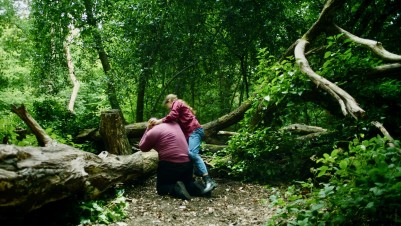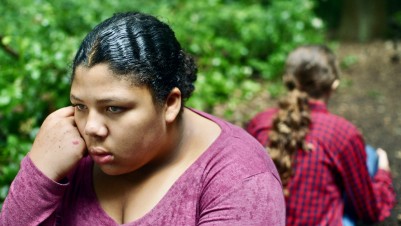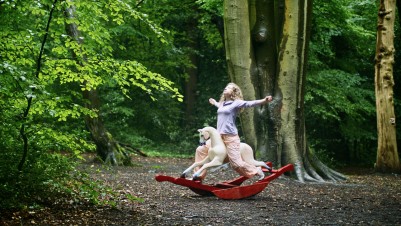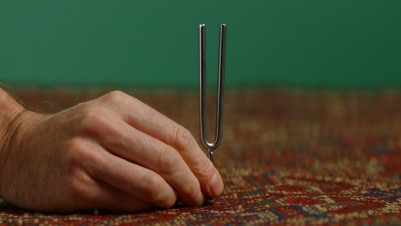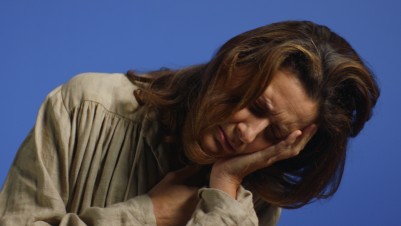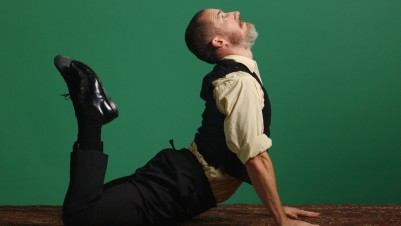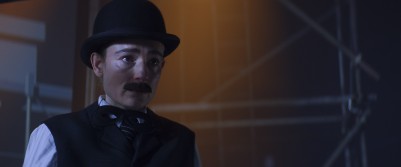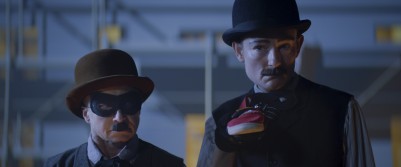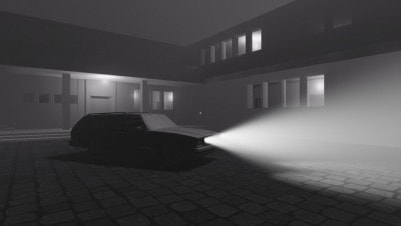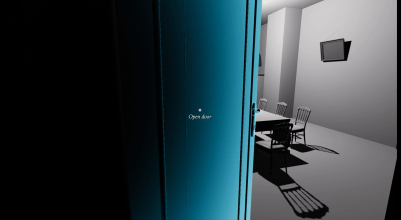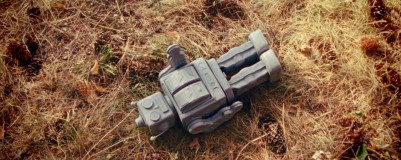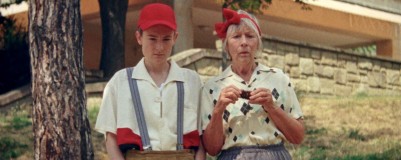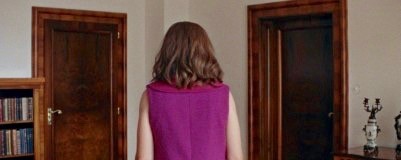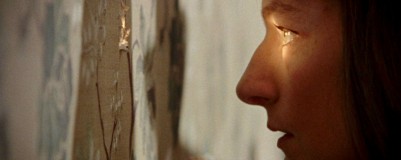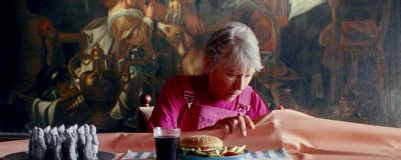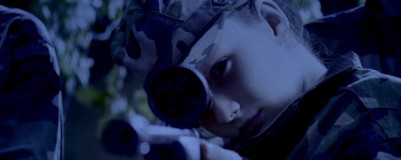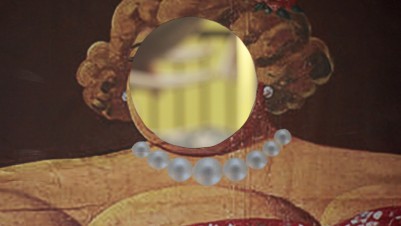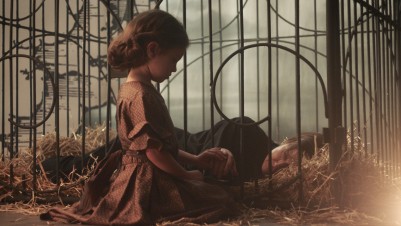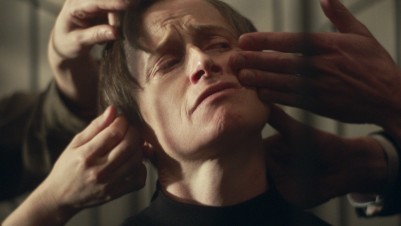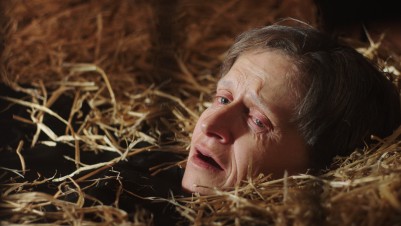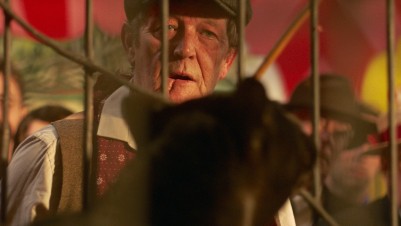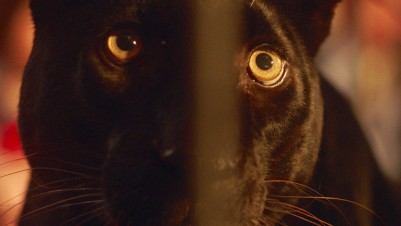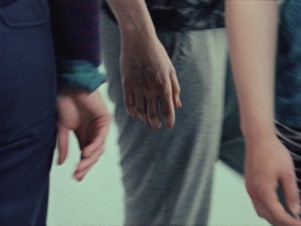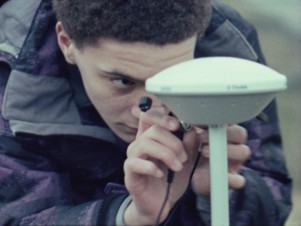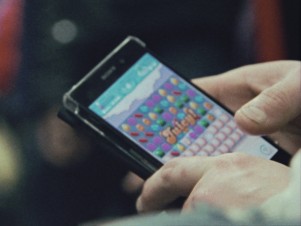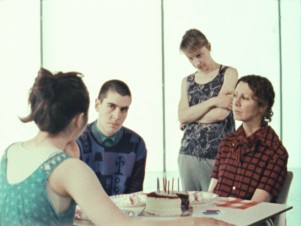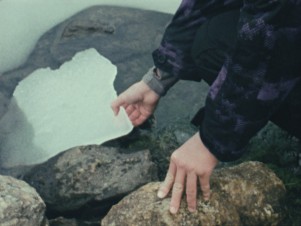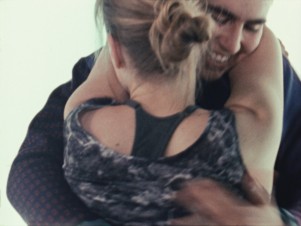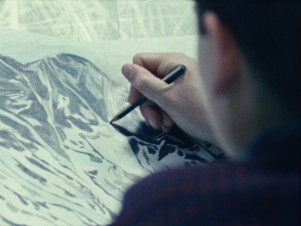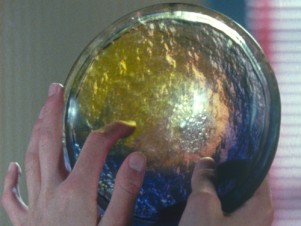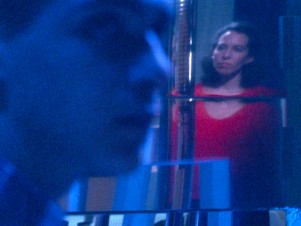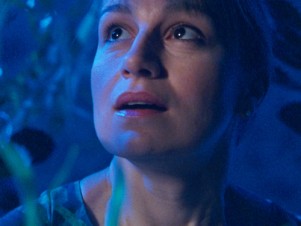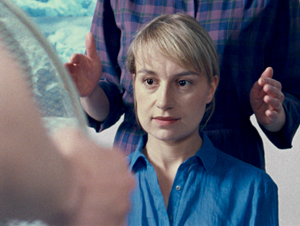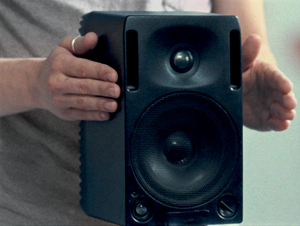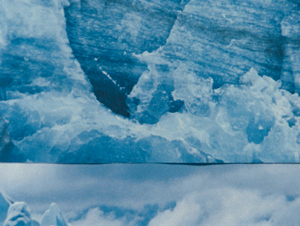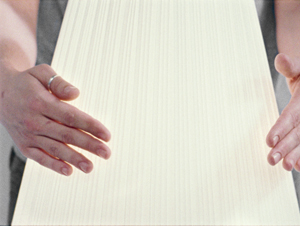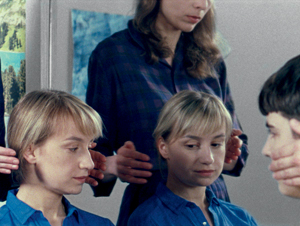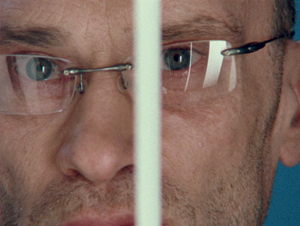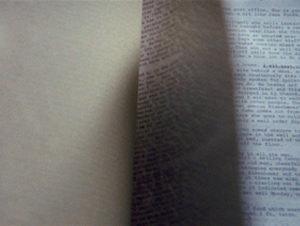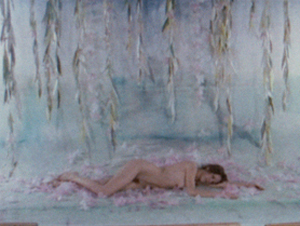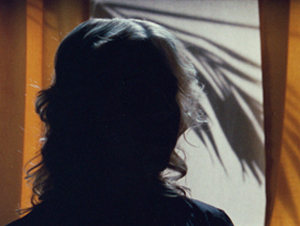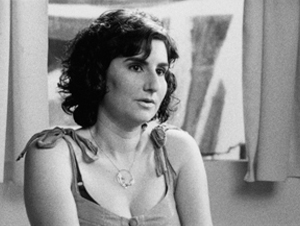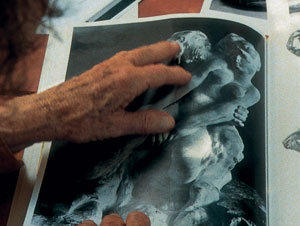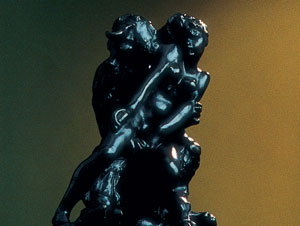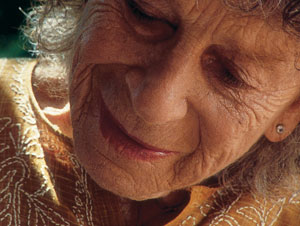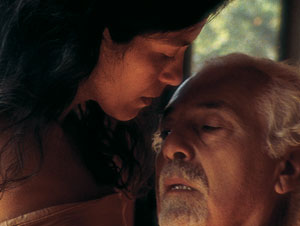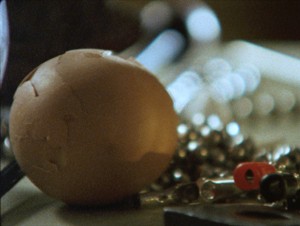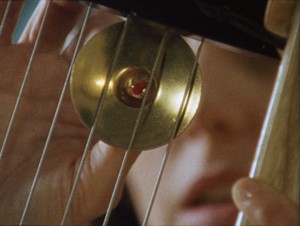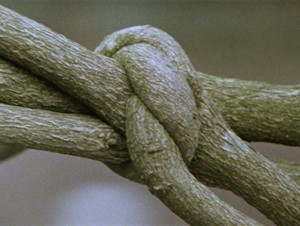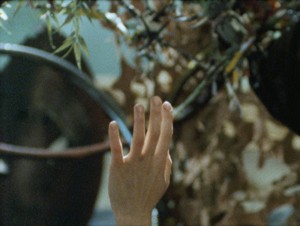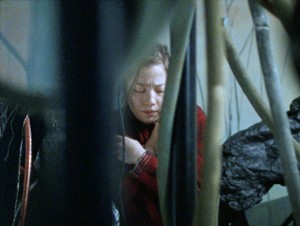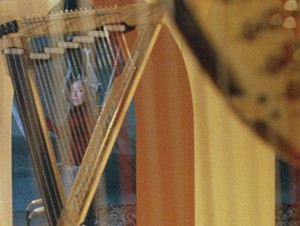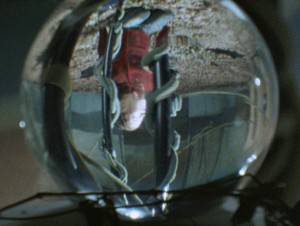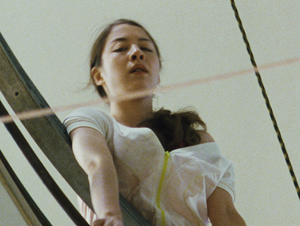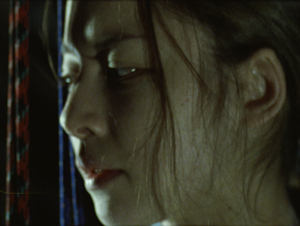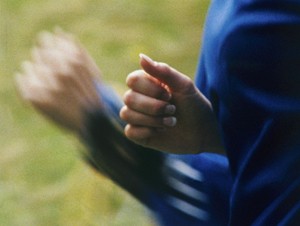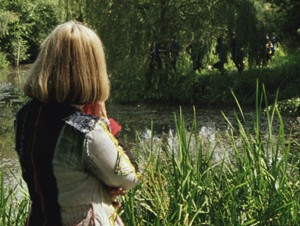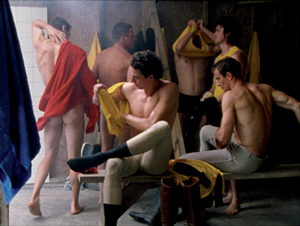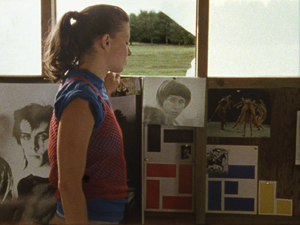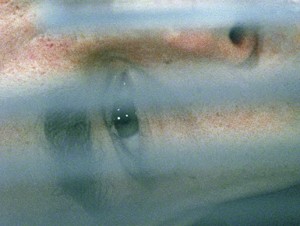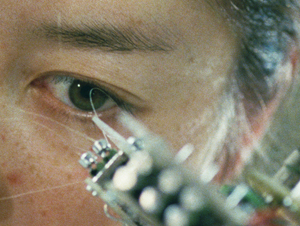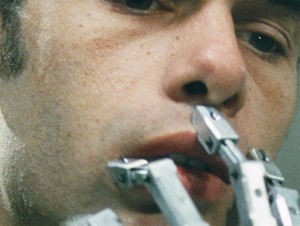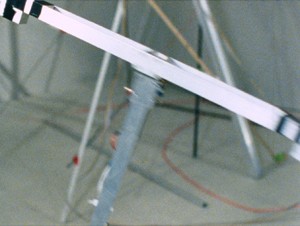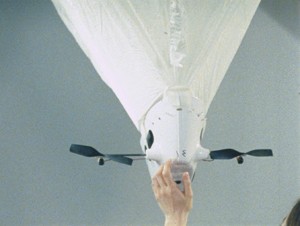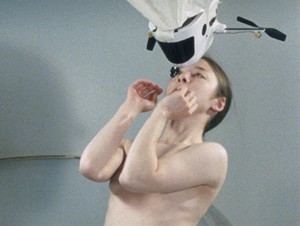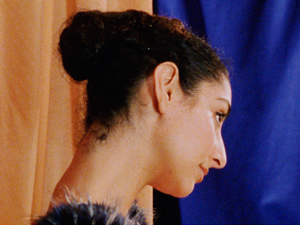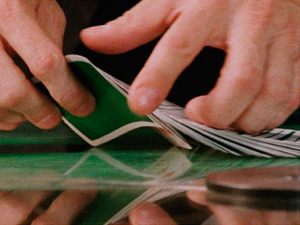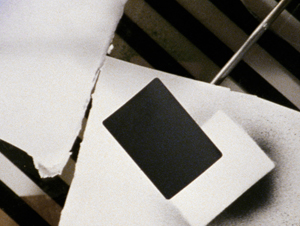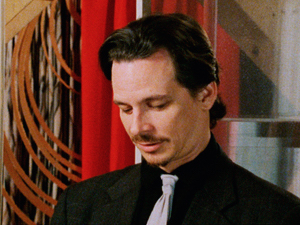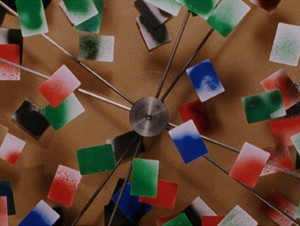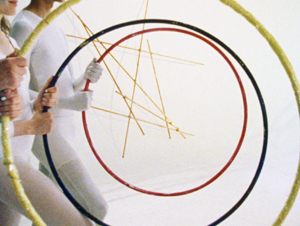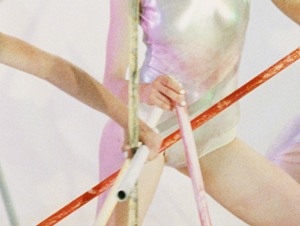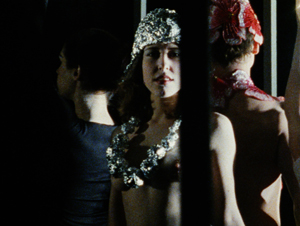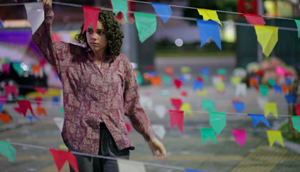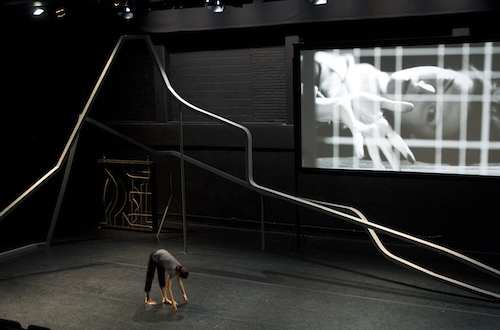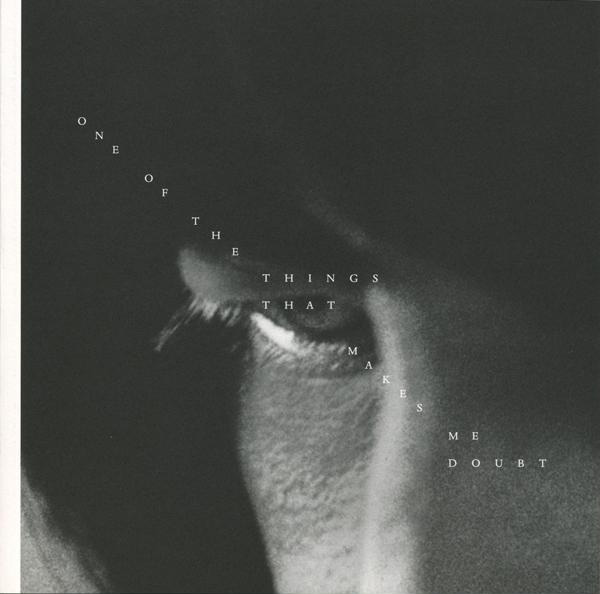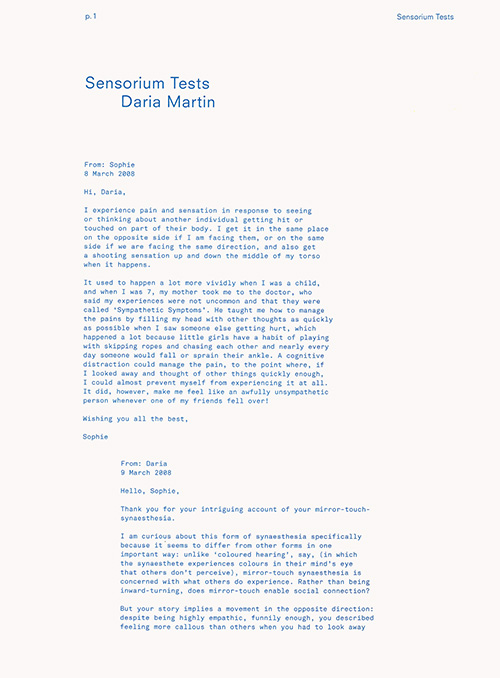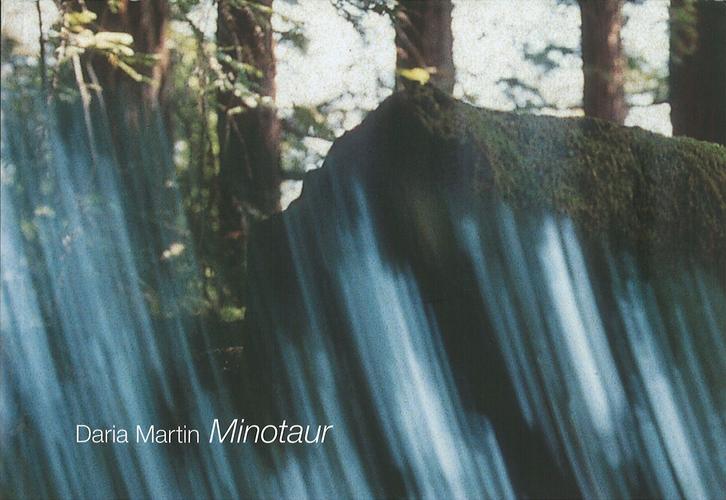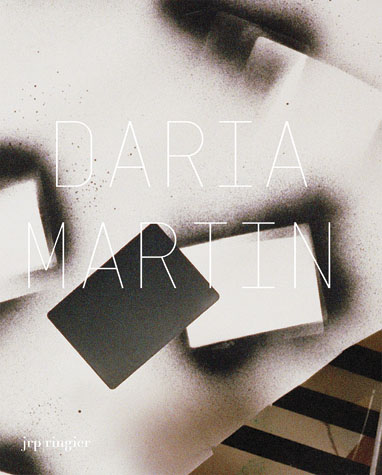2022
Nagel, Anna, Interview Daria Martin, The Posthumanist, No. 1, AW 2022 (cover).
2020
Karl, Brian, Daria Martin’s “Tonight the World”, art-agenda.com, 14 January 2020.
2019
Ing, Simon, Can someone else’s dreams ever be compelling? Daria Martin at the Barbican, www.ft.com, 5 February, 2019.
Aldridge, Imogen, Tonight the World: Daria Martin explores her grandmother’s dream diaries, nationalstudent.com, 13 March 2019.
Baines, Josh, 16mm specialist Daria Martin picks up the £ 10,000 prize at 2018 Film London Jarman Award, itsnicethat.com, 28 November 2018.
Banzetov., Michaela, SNY O PRVOREPUBLIKOVÉM BRNĚNSKÉM SKVOSTU NA V¯STAVĚ V LOND¯NĚ,ceskatelevize.cz, 6 March 2019.
Boncza, Michael, Awakening forgotten dreams, morningstaronline.co.uk, 19 February 2019.
Brodbin, Mary, Tonight the World – creating a sense of dread using dream diaries and film,socialistworker.co.uk, 5 February 2019.
Blythe, Finn, Into the Psyche: Daria Martin presents a walkthrough of her grandmother’s forgotten dream diaries, hero-magazine.com, 1 February 2019.
Budd, Amy, Daria Martin: Tonight the World, Art Monthly, March 2019, pp29 -31.
Frankel, Eddy, Daria Martin Tonight the World review, timeout.com, January 2019.
Geyer, Nathan, Daria Martin, Tonight the World, thewhitereview.org, March 2019.
Khan, Tabish, The Biggest Exhibitions to see in London right now, londonist.com, 4 February 2019.
Homer, Nicola, Daria Martin – interview: ‘Most people can relate to the feeling of being in exile’, studiointernational.com, 29 January 2019.
Hutchings-Georgiou, Hannah, Daria Martin: Tonight the World at The Curve, Barbican Centre, lucywritersplatform.com, 7 February 2019.
Luke, Ben, Daria Martin Tonight the World Review, www.standard.co.uk, 1 February 2019.
2018
Jonze, Tim, Dancing naked with robots: dreams of Jarman Prize winner Daria Martin, theguardian.com, 27 November, 2018.
Banissy, Martin, Some people with synaesthesia feel other people’s sensations of touch – painful and pleasurable,theconversation.com, 21 May 2018.
Bates, Claire, The doctor who really feels his patients’ pain,bbc.co.uk, 4 April 2018.
Bennett, David, Reviews – Daria Martin: A Hunger Artist,MousseMagzine.it, October 2018.
Berning-Sawa, Dale, Jarman award 2018 shortlist announced, 27 June 2018.
Britton Newell, Laurie, Somewhere In Between at Welcome Collection: 4 major pieces of science that art can help you understand,standard.co.uk, 2 March 2018.
Campbell Johnston, Rachel, Review: Somewhere in Betweenat the Wellcome Collection, thetimes.co.uk, 16 March 2018.
Casavecchia, Barbara, The Electric Comma, V-A-C Foundation, Venice, Artreview, March 2018, p. 96.
Darblay, Louise, Art Review: Editors Picks: London, artreview.com, 5 October 2018.
Douglas, Caroline, Friday Dispatch: Daria Martin: A Hunger Artist at Maureen Paley, London, contemporaryartsociety.org, 7 September 2018.
Eggleton, Lara, Daria Martin: A Hunger Artist,Art Monthly, July-August 2018, pp. 35-36.
Greenberger, Alex, Film London Jarman Award Reveals Shortlist for 2018 Prize, artnews.com, 27 June 2018.
Harris, Miriam, Best art and design exhibitions in 2018, digitalartsonline.co.uk, 22 May 2018.
Jones, Jonathan, Art Weekly: Beuys keeps swinging and Brazil burns bright – the week in art,theguardian.com, 13 April 2018.
Kane, Ashley, Art exhibitions to leave the house for in 2018, dazeddigital.com, 4 January 2018.
Khan, Tabish, 11 Must-See Exhibitions Coming To London In 2018, londonist.com, February 2018.
Khan, Tabish, Artificial Insemination And An Underwater Ballet: Science Meets Art At Wellcome Collection,8 March 2018.
Lamb, Hilary, Review: Somewhere in Between at the Wellcome Collection, London,eandt.theiet.org, 7 March 2018.
McKinny, Maria, Somewhere in Between: Exploring Art and Science Collaborations,labiotech.eu, 21 July 2018.
Martin, Daria, Daria Martin on ‘Sensorium Tests’ and ‘At the Threshold’,wellcomecollection.org, 22 March 2018.
Moulton, Nicola, ‘Wellbeing’ at the Wellcome — or where art meets healthcare, ft.com, 2 March 2018.
Stern, Melissa, Artists and Scientists Concoct Immersive Projects at the Wellcome,hyperallergic.co, 4 July 2018.
Thompson, Jessie, Art in London 2018: The best exhibitions and art shows to look forward to in the new year, 5 January 2018.
Walsh, Maria, Mirror Touch Synaesthesia: Thresholds of Empathy with Art, ArtMonthly, Art Monthly Foundation, December 2018, p. 40.
Waugh, Rosemary, Somewhere in Between,timeout.com, 15 March 2018.
Westall, Mark, Daria Martin wins the 2018 Film London Jarman Award, fadmagazine.com, 28 November 2018.
––––, Somewhere In Between exhibition opens at Wellcome Collection,irishnews.com, 7 March 2018.
––––, New York Jewish Film Festival2018, nyblueprint.com, 8 January 2018.
––––, At the Crossroads of Art and Science: ‘Somewhere in Between’countryandtownhouse.co.uk, March 2018.
––––, The C&TH Guide to the Biggest Exhibitions of 2018,countryandtownhouse.co.uk, February 2018.
––––, Somewhere In Between exhibition opens at Wellcome Collection,dailymail.co.uk, 7 March 2018.
––––, Science and Art: New Solutions,aestheticamagazine.com, 3 February 2018.
––––, Things To Do Today In London: Friday 24 August 2018, londonist.com, 24 August 2018.
––––, DARIA MARTIN WINS 2018 FILM LONDON JARMAN AWARD,artforum.com, 28 November 2018.
––––, Jarman Award 2018: Daria Martin wins annual prize for artists’ moving image work,a-n.co.uk, 27 November 2018.
2017
Martin, Daria, Work in Progress: A Hunger Artist, Frieze.com, 2 March, 2017.
Eastham, Ben, Reviews: Myths of the Marble, art-agenda.com, 30 March 2017.
Moseng, Maria, Myths of the Marble,Artforum, May, 2017, p.350.
Daria Martin,(film stills from Minotaur and Sensorium Tests used throughout the magazine) Oberon, Issue 3, September 2017.
Daria Martin, Berlin Art Week 2017, eflux.com, 3 September 2018.
A Hunger Artist, Here are the 8 Things You Should Seek Out During Berlin Art Week 2017, news.artnet.com, 4 September 2017.
2016
Grace, Ellen, Daria Martin Soft Materials, coeval-magazine.com, 13 October 2016.
Elmhirst, Sophie, The New Tate Modern: State of Art, Harper’s Bazaar, July 2016. pp. 140-147.
Homersham, Lizzie, Feelings, Art Monthly, July – August 2016, pp. 10-13.
Wallace-Thompson, Anne, Critics’ Pick: Daria Martin, artforum.com, February 2016.
Daria Martin: At the Threshold, Mousse, February – March 2016.
Double Take—Daria Martin’s “At The Threshold”, art-agenda.com, 10 March 2016.
—-, Opening this week, Time Out London, 26 January 2016.
—-, The Promise of Total Automation, 12 March 2016. thisistommorow.info
—-, The Promise of Total Automation, March 2016. e-flux.com
—-, “The Promise of Total Automation” at Kunsthalle Wien, Vienna, May 2016. moussemagazine.it
2015
Scardi, Gabi. Saltwater. Una teoria delle forme pensiero, domusweb.it, 1 October 2015.
Mammi, Alessandra, Biennale di Istanbul: dall’Art work all’Hard work, mammi.blogautore.espresso.repubblica.it, 6 September 2015.
2014
Valdes, Carolina, Synesthesia and the Bauhaus,
Theatre O, 6 January 2014.
Vasey, George, Hiller/Martin: Provisional Realities,
kaleidoscope-press.com, 29 January 2014.
Seaberg, Maureen, Tasting the Universe, Synesthesia from the inside out
psychologytoday.com, 24 January 2014
2013
Johnson, Ken, Art in Review: ‘Weird Sceince’ New York Times Online. 25 April 2013.
Martin, Daria, Three Embarrassing Things, PERSONA (edited by Melissa Gordon and Marina Vishmidt), October 2013
Martin, Daria, Petunia #5, May 2013 Banbury, Stephanie, Connecting dreams and consciousness, The Age, 30 May 2013, p.29.
2012
Scene and Herd
Kate Sutton
Artforum, 13 March 2012
The Independent: Calm Joy Amidst
Art Fair Claustrophobia
Ellie Bronson
artcritical.com, 8 March 2012
At the MK
Brian Dillon
London Review of Books,
9 February 2012
Daria Martin
Martin Herbert
Art Review, April 2012, pp.108-109
Minotauromachia en rose
Ada Masoero
Il Giornale Dell’Arte, January 2012
Animismus
Dominikus Müller
Frieze d/e, Spring 2012, p.125
Daria Martin
Eleanor Nairne
Frieze, April 2012, pp.142-143
Danser sa vie
Kathy Noble
Frieze, March 2012, p.145
Walking on Sunshine
Kate Sutton
artforum.com, 12 March 2012
Artist of the week 181: Daria Martin
Skye Sherwin
guardian.co.uk, 15 March 2012
2011
The Gleaners and I (2000)
Daria Martin
Frieze, September 2011, p.191
2010
Animism
Chris Clarke
Art Monthly, May 2010, pp34-35
Animism
Sam Steverlynck
Art Review, April 2010, p118
Rosemary Butcher
Judith Mackrell
guardian.co.uk, 3 October 2010
The return of the Showroom
Ossian Ward
Time Out, 24 September 2009, p47
Under The Skin
Catherine Wood
Kaleidoscope, Summer 2010, pp82-85
The Nude Man’s City
Roelstraete, Dieter
springerin, issue 3/10, 2010
2009
Daria Martin’s In The Palace
Carol Bove
Tate etc, Summer 2009, pp110-111
Daria Martin
Eva Fabbris
Kaleidoscope, March 2009, p63
Martin, Daria & Matmos, Meeting of Minds, Modern Painters, March 2009, p80
London Reviews Marathon: Daria Martin
Laura Mclean-Ferris
Art Review, January 2009, p82
The Approval Matrix
New York Magazine, 02 March 2009
From China, Iraq and Beyond,
but Is It Art?
Ken Johnson
The New York Times: Weekend Arts,
20 February 2009
The return of the Showroom
Ossian Ward
Time Out, 24 September 2009, p47
2008
Performa 07
Francesco Bonami
Domus, January 2008
Case Study:Harpstrings and Lava and Minotaur by Daria Martin
Frieze, November-December 2008,
p158-159
Keeping Pace with Art Itself:
The Three M Project at the New Museum,
www.db-artmag.com, Issue 3, 2008, p7
Daria Martin
Jessica Lack
Guardian Guide, 1st November 2008, p36
Exhibitionist: What to see this week
Laura Mclean-Ferris
guardian.co.uk, 14 November 2008
Pioneers/Passengers
Julian Myers
Frieze, January 2008, p181
Focus London, Artists Dictionary:
Daria Martin
Flash Art, October 2008, p95
Reviews: Daria Martin
Sally O’Reilly
Time Out, 13-19 November 2008, p69
Daria Martin at Maureen Paley
Temposhark
kctv.co.uk, 24 November 2008
Daria Martin
Maria Walsh
Art Monthly, December 2008, p33 – 34
2007
Previews: Performa07
Philip Auslander
Artforum, September 2007, p158
Daria Martin: just wants to dance
Louisa Buck
Art Newspaper, 7 December 2007
Never Still
Kennedy, Alexander
The List, 16 February 2007, p89
2nd Moscow Biennale
Simon Rees
Frieze, May 2007, p154
Map Magazine
March 2007
2006
Tate Triennial
David Barrett
Art Monthly, May 2006
Track and Field
Kirsty Bell
Frieze, March 2006, p126-129
Show me all your hidden secrets
Craig Burnett
Art Review, May 2006, p114-117
Tate Triennial 2006
Laura Cumming
Observer, 05 March 2006
Haunted by concepts of the past
Richard Dorment
Telegraph, 07 March 2006
On the Ground: London
Melanie Gillian
Artforum, December 2006,
p256 – 258 & 350
Periodical tables – Tate Etc
Simon Grant
Frieze, June, July, August 2006,
p248 & 249
Art Review:
Uncertain States of America
Fisun Guner
Metro, 14 September 2006, p36
British Art (does it) Show?
Andrew Hunt and Neil Mulholland Frieze, Issue 96, January – February 2006, p132-137
Zeena Parkins & Daria Martin: Regeneration, London Tate Modern
Pablo Lafuente
Wire, May 2006, p81
Uncertain States of America
Dean Kenning
Art Monthly, No. 300, October 2006, p31 & 32
Feats (and follies) of technology
Cate McQuaid
Boston Globe, 18 June 2006
Spotlight, British Art Show 6
Neil Mulholland
Flash Art, Volume XXXIX, Nº246, January – February 2006, p100
Greek Myth and
the Ghosts of Bexhill-on-Sea
Olivia Plender
Tate Etc, Spring 2006
Periodical tables – Untitled
Olivia Plender
Frieze, June, July, August 2006, p249
Rebels without a cause
Adrian Searle
The Guardian, 09 December 2006,
p18 – 20
Barry Schwabsky on Daria Martin
Barry Schwabsky
Artforum, March 2006, p264-265
Fast Forwarding The Avant Garde:
Daria Martin
Silvia Sgualdini
Uovo Magazine, Issue 11, 2006,
p24 – 51
Daria Martin/Bernd Krauss
Tanja Widmann
Springerin, 18 February 2006, p67
Tate Triennial 2006
Eliza Williams
Flash Art, May 2006, p63 & 64
Don’t miss
Art Review, March 2006
On the Ground
Artforum, January 2006, p218
Tate Triennial
Art Review, May 2006, p128
Tate Triennial 2006
Tate Magazine, April 2006
The Artists’ Artists
Artforum, December 2006, p119
Top 100 Artists
Flash Art, October 2006, p68-69
2005
Anti-Sensation!
Artist’s ‘discreet and quiet’ work wins £26,000 Beck’s Futures Prize
Arifa Akbar
The Independent, 27 April, 2005
Meet the new faces of the UK Art Scene
Arifa Akbar
Independent, 06 June, 2005
Beck’s Futures
Hephzibah Anderson
Evening Standard, 21 March, 2005
Brighter Future
James Anderson
Loaded Fashion, 31 March, 2005
Daria Martin interviewed
Diana Baldon
tema celeste, March – April 2005,
p56 – 57
Now you see it…
Pryle Behrman
Galleries, 01 April 2005, p15
Daria Martin: The Showroom
(review)
David Bussel
Artforum, May 2005, p261
Critics Pick & New this week
Rachel Campbell-Johnson
The Times, The Knowledge, 12 March 2005, p33
Laugh, cry, or try to get it, but it’’ all acreative mess
Campbell-Johnston, Rachel
The Times, 18 March 2005
Beck’s Futures
JJ Charlesworth
Modern Painters, May 2005
Shock and surprise are significant
Emmanuel Cooper
Tribune, 15 April 2005
Celluloid Sensibilities
Polly Corrigan
Telegraph.com, 08 March 2004
Tales from a shanty town
Laura Cumming
Observer Review, 27 March 2005
A Tidy Show Indeed
Charles Darwent
Independent on Sunday,
20 March 2005, p25
Futures Imperfect
Serena Davies
Daily Telegraph, 05 March 2005, p20
future fantastic
Kim Dhillon
i-D, Nº55, June 2005, p36
A truly Cosmopolitan affair
Iain Gale
Scotland on Sunday, 02 October 2005
Calling the young at art
Flsun Guner
Metro, 21 March 2005
Opportunity knocks
Eddie Harrison
Metro Scotland, 24 May 2005
Playing to the Gallery
Nick Hacksworth
Evening Standard, 22 March 2005
Martin Herbert
Artforum, 22 March 2005
The other art prize:
it’s cabaret night for maverick minds
Mary Horlock
Financial Times, 31 March 2005
British Art Show 6
Sarah James
Art Monthly, November 2005
…Beck’s Futures shows what a mess the ICA is in…
Waldemar Januszczak
The Sunday Times Culture,
20 March 2005
Where the creative misfits in Beck’s?
Moira Jeffery
Glasgow Herald, 01 June 2005
Smell of success:
Scented art up for prize
Jinman, Richard
The Guardian, 16 March 2005
Visions of ‘emotional landscapes’ seduce Beck’s judges
Jonathan Jones
The Guardian, 27 April 2005, p11
Beck’s Futures
Alexander Kennedy
The List, 09 June 2005
Brewer’s Droop
Sarah Kent
Time Out, 30 March 2005
Debut: Daria Martin
Pablo Lafuente
Art Review, January 2005
Daria Martin: The Showroom
(review)
Lisa Le Feuvre
Art Monthly, March 2005, p27
Graveyard with a scent of art’s richest award
Luke Leitch
Evening Standard, 15 March 2005
Instant Culture
Tom Lubbock
The Independent Review, 15 March 2005
It’s not the winning, it’s the
making art
Jack Mottram
Sunday Herald, 29 May 2005
Smell of Success for Arts Prize Contender
Sherna Noah
Scotsman, 15 March 2005
Daria Martin: The Showroom
(review)
Sally O’Reilly
Modern Painters, April 2005,
p110 – 111
Daria Martin: The Showroom
(review)
Lisa Panting
frieze, April 2005, p117-118
Say it with flowers
Adrian Searle
The Guardian, 22 March 2005
Beck’s Futures 2005
Alberto Sanchez
Exit Express, March 2005
A nose for novelty
Sarah Shannon
Independent, 03 March 2005
Smell of success for Arts Prize Contender
Press Association, 15 March 2005
Eye Robot
Rob Tufnell
Tank, January 2005
Sleight of Hand, Artists’ work on show for Beck’s Prize
Jim Winslet
Financial Times, 16 March 2005
Art and film get spliced
Ian White
Art Review, October 2005, p61-62
Art Beat & Hit List
The List., 13 June 2005
Awards and Shortlists
Art Review, Febuary 2005
Beck’s Appeal
Design Week, 13 January 2005
Beck’s Futures 2005
artrepublic,com, 22 March 2005
Beck’s Futures
ID, May 2005
Beck’s Futures
Metro Life, 08 April 2005
Beck’s Futures 2005
Scotland on Sunday, 29 May 2005
Beck’s Futures
The Times, 09 April 2005
Brit Art: the Next Generation
The Independent, 1 December, 2005
Drinks News
Night Magazine, 01 April 2005
Exploring the concept of form
and space
Exmouth Journal, 05 May 2005
Future Greats
Art Review, December 2005
In the balance
Art Newspaper, February 2005
In Pictures: Beck’s Futures finalists
BBC News, 15 March 2005
Openinmg this week
Metro Life, 18 March 2005
Pick n Mix
Attitude, March 2005, p106
Pick of the month
Arena, 01 April 2005
Six Scent Success in Richest Arts Awards
PA News, 26 April 2005
£26,000 Prize for Artist who leaves critics ‘baffled’
PA News, 26 April 2005
When does a sound become art?
Art Review, Volume LVI, May 2005
p74-77
2004
Beck’s Futures shortlist abandons the sensational for ‘more serious’ artworks
Jonathan Brown
Independent.com, 17 December 2004
Critics’ Picks: Closeup Gallery
David Bussel
Artforum Online, November, 2004
Scot based filmmaker Shortlisted for the Beck’s Future art prize
Rhiannon Edward
The Scotsman, 18 December 2004
ICA Unveils art prize shortlist
Charlotte Higgins
Guardian.com, 17 December 2004
Daria Martin
Pablo Lafuente
Art Review, Volume LIV, December 2004 – January 2005, p102
Corridor Shorlisted for Art Prize
Valentine Low
Evening Standard, 17 December 2004
Dark Art of Urquart wins place on Becks prize shortlist
Miller, Phil
Glasgow Herald, 18 December 2004
London Picks: In the Palace at 4 am
Emily Pethick
Artforum Online, July, 2004
Palace Evolution
Time Out, 28 July-4 August 2004
On Daria Martin
Olivia Plender
Untitled, Spring 2004, p14-19
Moving the Goalposts
Sanjoy Roy
Contemporary, issue 66, October, 2004, P32 – 35 and cover
Becks Futures Shortlist Announced artforum.com, 17 December, 2004
Jabba slugs it out for £20,000
Metro, 17 December, 2004
Short List for Beck’s Futures 2005 Announced
artdaily.com, 20 December, 2004
Star Wars Inspires Art Shortlist
bbc.co.uk, 17 December, 2004
2003
Quienes son los modernos?
Roberta Bosco
Babelia, 03 May, 2003
Castello di Rivoli Museo d’Arte Contemporanea
e-flux, 04 October 2003
The Moderns
Carolyn Chrietov-Bakargiev
TK_eventi, 16 April, 2003
Tris Espositivo al Castello di Rivoli
Jacaopo Cordero
culturalweb, 14 March, 2003
I Moderni al Castello
Guido Curto
Torino Sette Settimanale di spettacolo, cultura e tempo libero, 11 April, 2003
News: London
Richard Dyer
Contemporary, Nº55, 2003, p14-16
Labirinti Elettrici
Luisa Espanet
Gulliver, 3 March 2003
Moderni si, modaioli no: chi sono gli artisti della generazione post Twin Towers
Franco Fanelli
Il Giornale Dell’ Arte, No. 220,
03 April 2003, p12
Revelling in Beauty at Rivoli
Roberta Kedzierski
Hello Milano, May, 2003
La mostra “I moderni al castello
di Rivoli
Simona Maggiorelli
Europa, 05 April, 2003
I Moderni/The Moderns
Skira Milano
cerca cultura, 07 April, 2003
Un salto oltre il modernismo
Sabrina Passarella
Luna Nuova, 15 April, 2003
Il villaggio dell’arte e aperto
Andar Per Mostre
La Stampa, 26 April, 2003
Daria Martin and the Modern Pentathlon
Barbara Polla
Citizen K, Paris, Winter, 2003-2004, p68, 362
I Moderni
A. Giovanni Rangoni
Piu…, March 2003
La modernita emergente a Rivoli
Roberto Roselli
Mil Ano Arte, 16 April, 2003
I moderni in mostra
Valentina Rovera
Torino Magazine, No. 58, May, 2003
Guida al Maniero del futuro
Gabi Scardim
Il Sole 24 Ore, 27 April 2003
Per Dimenticare la noia del
Post-Modern
Vittorio Sgarbi
Grazia, 20 May 2003
Daria Martin
(review)
Andrea Viliani
Flash Art International, Milan, October, 2003, p124
Appuntamenti
Torino Always on the Move, May, 2003
Contemporanei? No, Moderni
La Repubblica, Rome, April 5, 2003, p65
Due Mostre
Ansa, 15 April, 2003
I Moderne/The Moderns
Lettera Dei Musei, 13 April, 2003
‘I Moderni’ in mostra al Castello di Rivoli fra musica e arte
Zero Nove, 14 April, 2003
Il Castello torinese dei Moderni
il Manifesto, 12 April, 2003
In Mostra
Grazia, 04 March, 2004
I Modernio/The Moderns
Go Spark, April, 2003
I Moderni/The Moderns
extrart, 11 February 2003
L’Arte & Il Sapere
La Gazzetta Web, 19 February, 2003
Lightbox 2
Art Now Tate, 2003
Castello di Rivoli
tema celeste, March 2003
Moderni
Arata Isozaki, Janet Cardiff, Giorgia Fiorio, Alessandre Testi
Torino Sette, 23 March, 2003
Rivoli
ExhibArt, 15 May, 2003
“The Moderns” e “Electric Labyrinth” al Castello di Rivoli
Portfolio Italia, 10 April, 2003
The Moderns I Moderni
Torino, March, 2003
2002
Maurizio Cattelan, curator,
Charley 01, New York, Spring, 2002
A room of their own
Pablo Lafuente
Artreview, London, November 2002
Birds
Esther Pierini
frieze, London, April 2002, p103
2001
First Take: Daria Martin
David Rimanelli
Artforum, New York, January 2001, p127
2000
Sentimental Education
(review)
Holland Cotter
The New York Times, New York,
July 14, 2000
Top Ten of 2000
Rimanelli, David
Artforum, New York,
December 2000, p120
Realm of the Senses
Saltz, Jerry
The Village Voice, New York,
July 6, 2000

